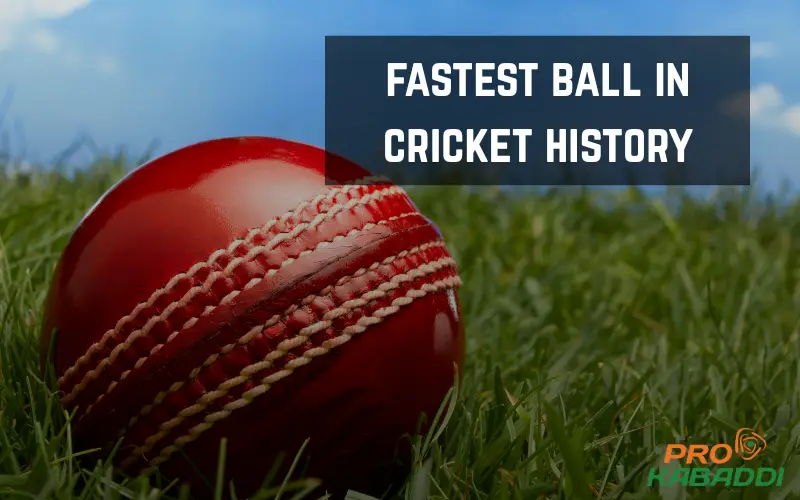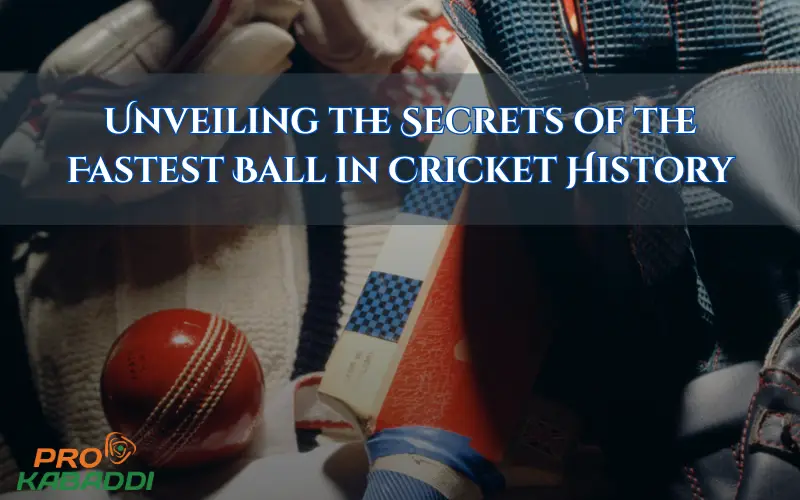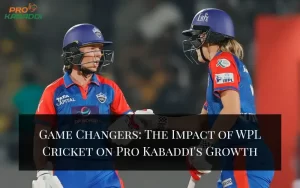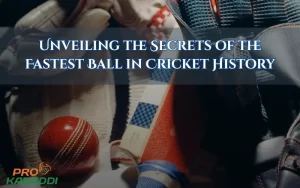Cricket, often referred to as a game of skill, strategy, pro kabaddi official site and precision, has seen some remarkable feats over the years. Among these, the record for the fastest ball ever bowled stands out as a testament to the incredible athleticism and talent of fast bowlers. In this article, we will delve into the secrets behind the fastest ball in cricket history, exploring the record-holder, the science of fast bowling, and the impact of speed on the game.
The Record Holder: Shoaib Akhtar
The title of the fastest ball in cricket history belongs to Shoaib Akhtar, a former Pakistani cricketer known for his blistering pace and aggressive bowling style. On February 22, 2003, during a One Day International (ODI) match against England in the Cricket World Cup, Akhtar bowled a delivery that clocked an astonishing 161.3 km/h (100.23 mph). This remarkable achievement not only made him the first bowler to officially break the 100 mph barrier but also solidified his legacy as one of the greatest fast bowlers in the history of the sport.
The Context of the Record
Shoaib Akhtar’s record-breaking delivery came during a crucial World Cup match, showcasing not only his physical prowess but also the pressure and intensity of international cricket. The ability to deliver such speed in a high-stakes environment speaks volumes about his mental fortitude and preparation.
The Science Behind Fast Bowling
1. Biomechanics of Fast Bowling
Fast bowling is a complex skill that requires a combination of strength, speed, and technique. The biomechanics of fast bowling involves several key components:
- Run-Up: The bowler’s approach to the crease is crucial. A well-timed and explosive run-up helps generate momentum, which is essential for achieving high speeds.
- Delivery Stride: The delivery stride is where the bowler transfers their kinetic energy into the ball. A longer stride can help increase speed, but it must be balanced with control.
- Arm Action: The bowler’s arm must whip through the air at high speed. The shoulder and elbow joints play a significant role in generating this speed, and proper technique is vital to avoid injury.
- Follow-Through: A good follow-through not only helps maintain balance but also contributes to the overall speed of the delivery.
2. Physical Conditioning
To bowl at extreme speeds, fast bowlers must undergo rigorous physical conditioning. This includes:
- Strength Training: Building core strength and leg muscles is essential for generating power during the delivery.
- Plyometrics: Exercises that focus on explosive movements help improve a bowler’s speed and agility.
- Endurance Training: Fast bowlers need to maintain their speed throughout the match, making cardiovascular fitness crucial.
3. Mental Preparation
Mental toughness is as important as physical ability in fast bowling. Bowlers must be able to handle pressure, maintain focus, and execute their plans effectively. Visualization techniques, mindfulness, and experience in high-pressure situations all contribute to a bowler’s ability to perform at their best.
The Impact of Speed on the Game
1. Challenges for Batsmen
The introduction of fast bowling has significantly changed the dynamics of cricket. Batsmen face unique challenges when facing high-speed deliveries:
- Reaction Time: Batsmen have limited time to react to fast deliveries, making it essential for them to have quick reflexes and excellent hand-eye coordination.
- Shot Selection: The speed of the ball influences the types of shots a batsman can play. They must be adept at playing both defensive and aggressive shots to counter fast bowlers.
- Mental Pressure: Facing a bowler like Shoaib Akhtar can be intimidating. The psychological aspect of dealing with extreme pace can affect a batsman’s performance.
2. Strategic Bowling
Fast bowlers often use their speed to set up batsmen. By varying their pace, line, and length, they can create uncertainty and force mistakes. Strategies include:
- Bouncers: Delivering short-pitched balls that rise towards the batsman’s head can unsettle them and lead to mistakes.
- Yorkers: Bowling full deliveries aimed at the batsman’s feet can be difficult to play, especially at high speeds.
- Slower Balls: Mixing in slower deliveries can catch batsmen off guard, leading to wickets.
The Legacy of Fast Bowling

1. Influence on Future Generations
Shoaib Akhtar’s record has inspired countless young cricketers to pursue fast bowling. His unique style and ability to bowl at extreme speeds have set a benchmark for aspiring bowlers. The quest for speed continues to be a driving force in the development of fast bowlers around the world.
2. Technological Advancements
With advancements in technology , the training and performance analysis of fast bowlers have evolved significantly. Tools such as high-speed cameras and motion analysis software allow coaches and players to dissect bowling techniques, helping bowlers refine their skills and improve their speed.
3. The Role of Equipment
The evolution of cricket equipment has also played a crucial role in fast bowling. Modern cricket bats, protective gear, and bowling shoes are designed to enhance performance and safety. The materials used in cricket balls have also improved, allowing bowlers to achieve greater speeds while maintaining control.
Conclusion
The fastest ball in cricket history, delivered by Shoaib Akhtar, is not just a record; it is a symbol of the relentless pursuit of excellence in the sport. The combination of physical prowess, mental strength, and technological advancements continues to push the boundaries of what is possible in fast bowling. As new talents emerge and the game evolves, the quest for speed will remain a thrilling aspect of cricket, captivating fans and inspiring future generations of cricketers. The secrets behind the fastest ball are a blend of science, skill, and sheer determination, making it one of the most fascinating elements of the game.








